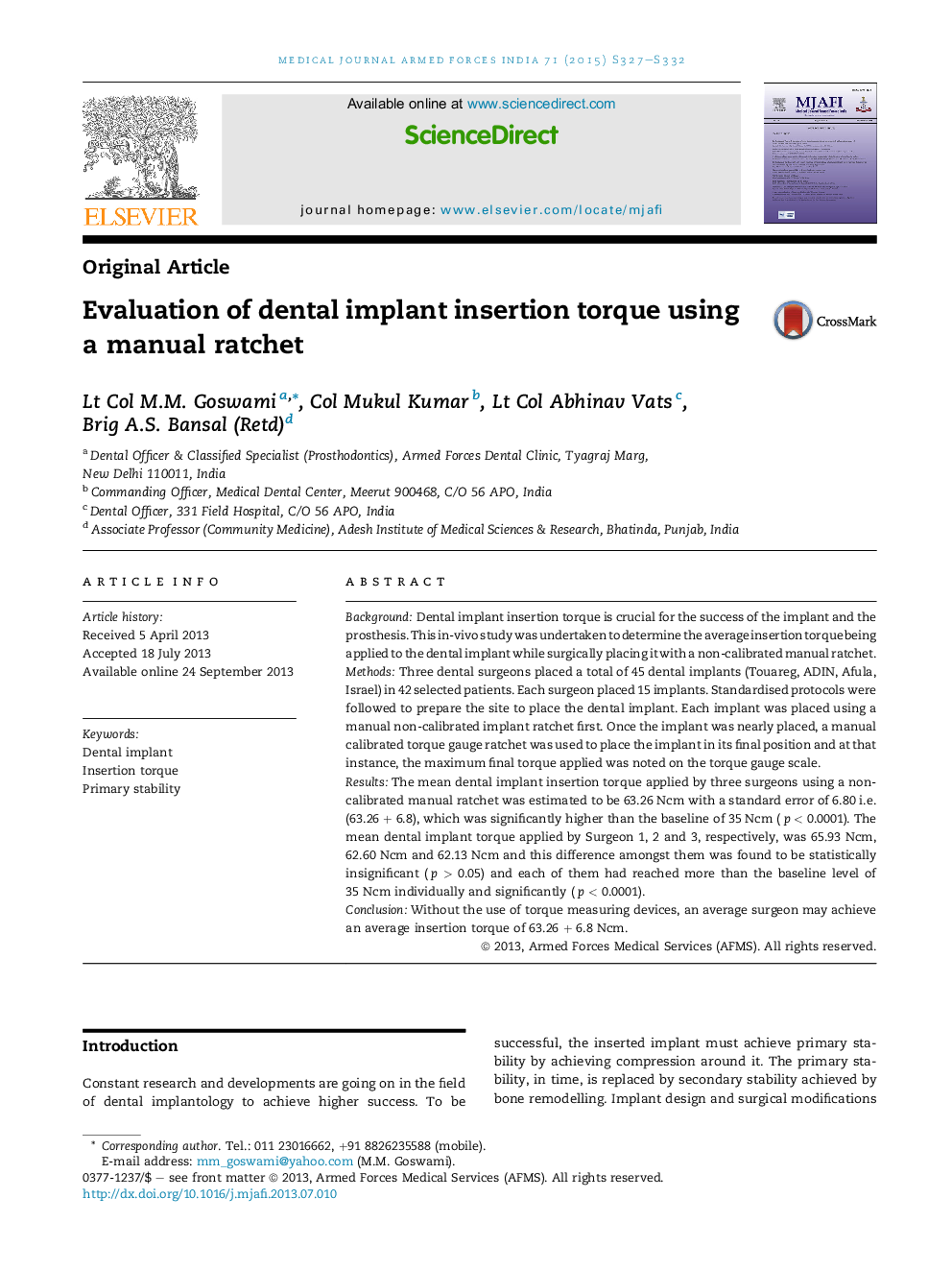| Article ID | Journal | Published Year | Pages | File Type |
|---|---|---|---|---|
| 3161071 | Medical Journal Armed Forces India | 2015 | 6 Pages |
BackgroundDental implant insertion torque is crucial for the success of the implant and the prosthesis. This in-vivo study was undertaken to determine the average insertion torque being applied to the dental implant while surgically placing it with a non-calibrated manual ratchet.MethodsThree dental surgeons placed a total of 45 dental implants (Touareg, ADIN, Afula, Israel) in 42 selected patients. Each surgeon placed 15 implants. Standardised protocols were followed to prepare the site to place the dental implant. Each implant was placed using a manual non-calibrated implant ratchet first. Once the implant was nearly placed, a manual calibrated torque gauge ratchet was used to place the implant in its final position and at that instance, the maximum final torque applied was noted on the torque gauge scale.ResultsThe mean dental implant insertion torque applied by three surgeons using a non-calibrated manual ratchet was estimated to be 63.26 Ncm with a standard error of 6.80 i.e. (63.26 + 6.8), which was significantly higher than the baseline of 35 Ncm (p < 0.0001). The mean dental implant torque applied by Surgeon 1, 2 and 3, respectively, was 65.93 Ncm, 62.60 Ncm and 62.13 Ncm and this difference amongst them was found to be statistically insignificant (p > 0.05) and each of them had reached more than the baseline level of 35 Ncm individually and significantly (p < 0.0001).ConclusionWithout the use of torque measuring devices, an average surgeon may achieve an average insertion torque of 63.26 + 6.8 Ncm.
